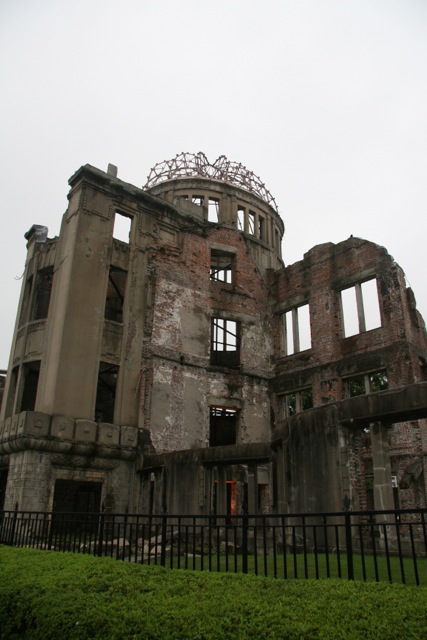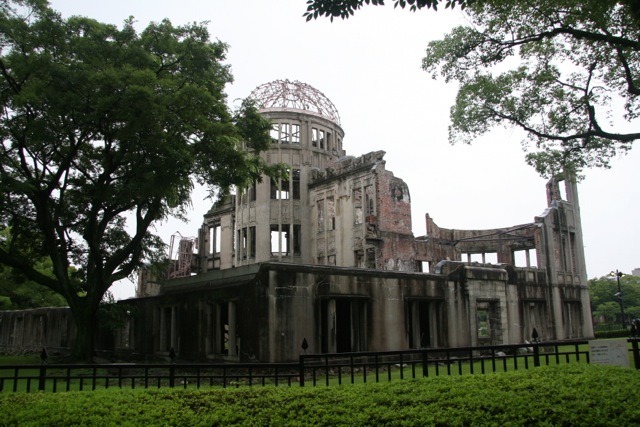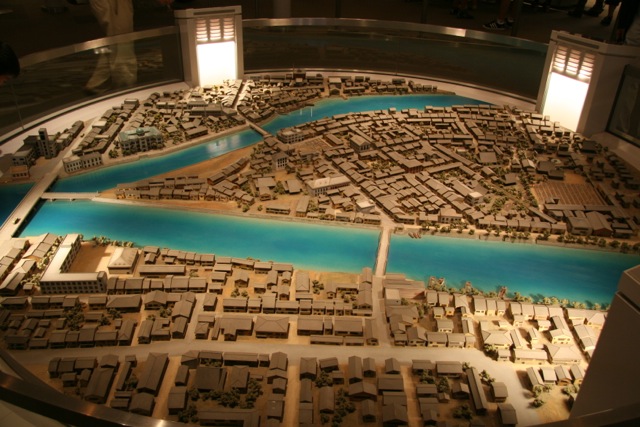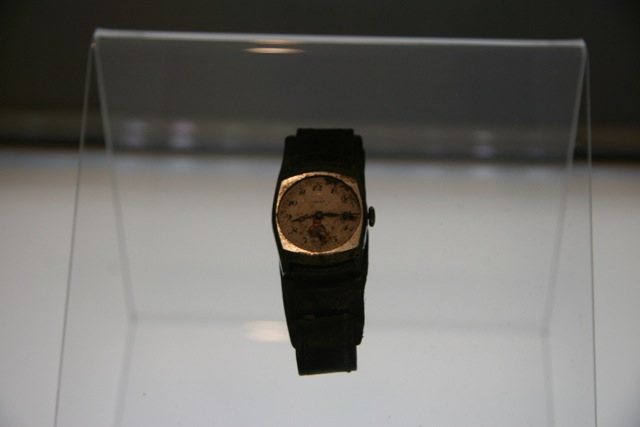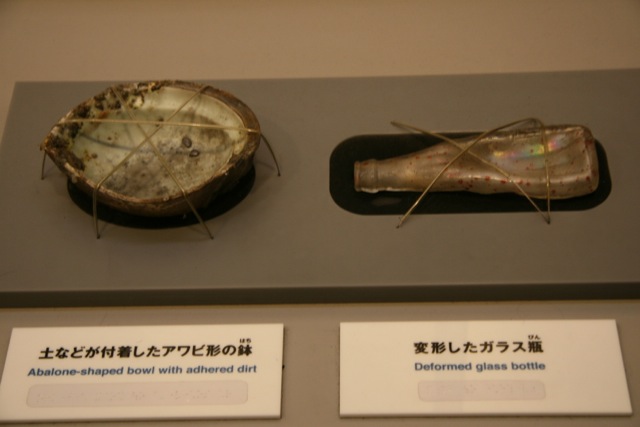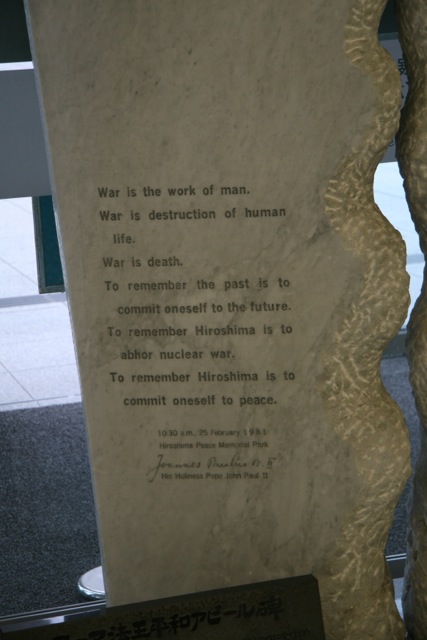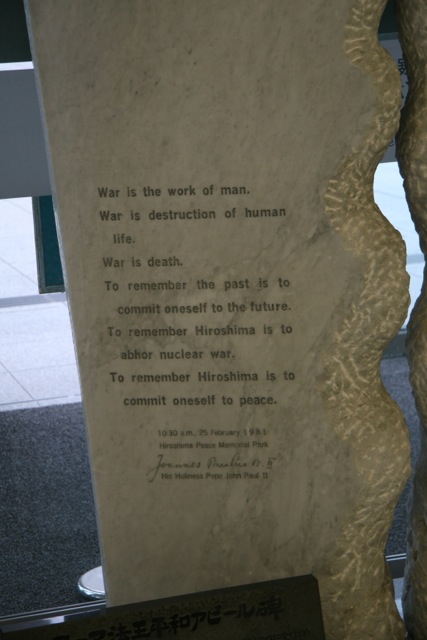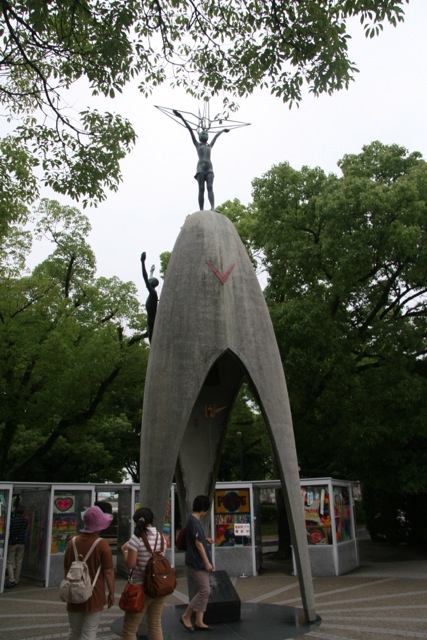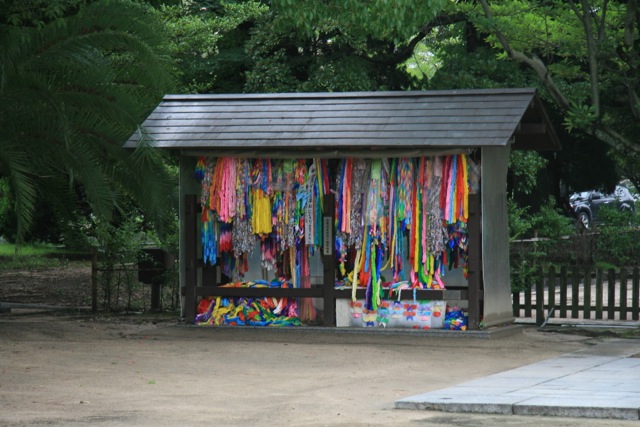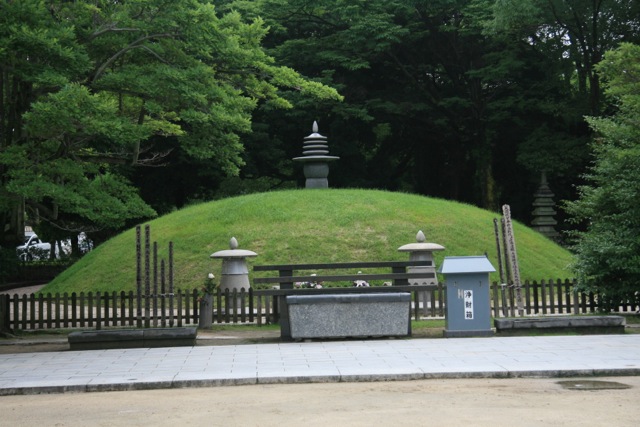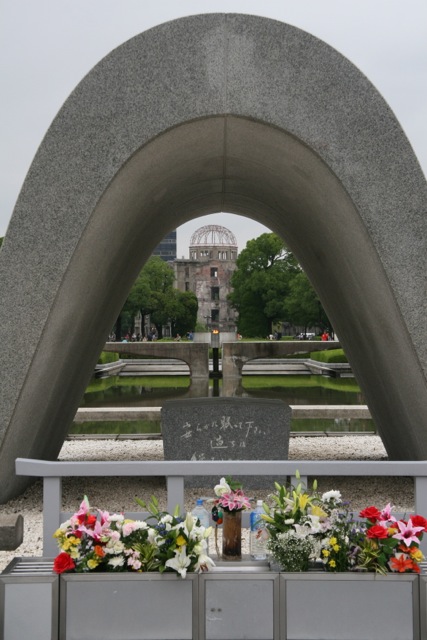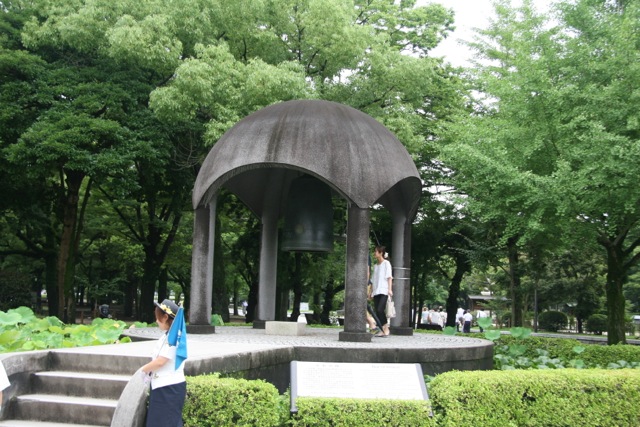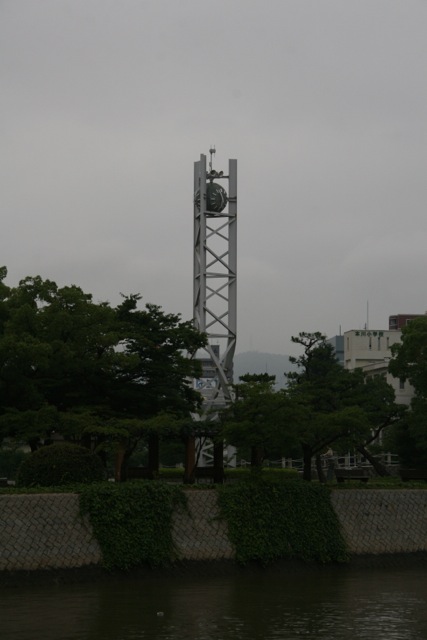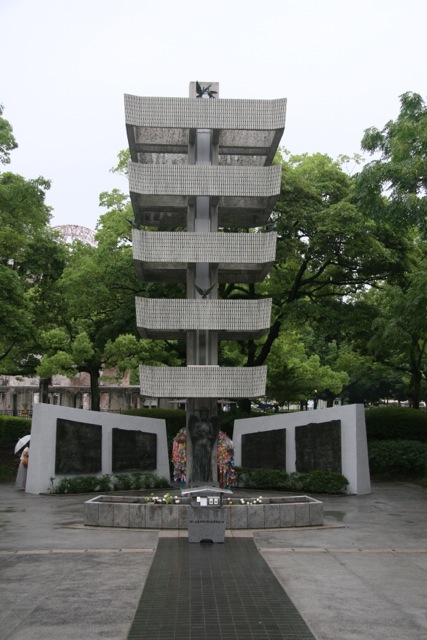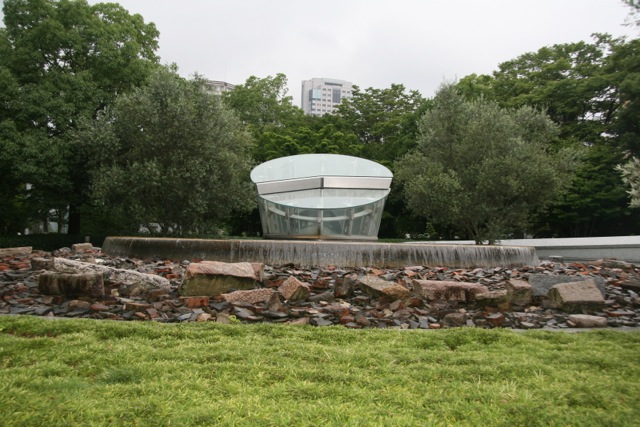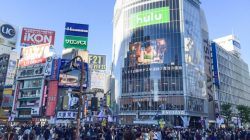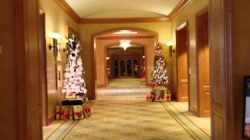Sixty seven years ago, on August 6, 1945, the world was changed forever, as an atomic bomb was dropped above Hiroshima Japan. At 8:15 in the morning, the B-29 named Enola Gay flew over Hiroshima dropping its only payload, a single bomb known as Little Boy. It detonated about 2000 feet (600 m) above the ground. The nuclear era had begun.
Hiroshima Peace Memorial/A-Bomb Dome
I recently took a brief leisure trip to Japan. One stop along the way was in Hiroshima. I chose this destination since I am interested in history, plus I wanted to fly on a 787. ANA has a sub fleet of domestic 787s, and Hiroshima is one of the destinations that has regular service.
The area around the hypocenter of the blast, which was the Hiroshima city center, is now a large park dedicated to the memory of those lost in the bombing, and to a peaceful world. The centerpiece of the area is what is now called the A-Bomb dome, and surrounding it is a park with monuments dedicated to various groups who were effected by the blast. The dome is now a UNESCO World Heritage Site. It was an emotional experience to say the least, but I’m very happy to have been able to see it.
Hiroshima of 2012 is a fully modern city, the only remnant of the horrific destruction is the ruins of the dome, which stands as a permanent reminder. This building was built in 1915 by Czech architect Jan Letzel as the Hiroshima Prefectural Commercial Exhibition. It was a stunning structure in a city filled with primarily 2 story wooden structures. The proliferation of wooden buildings made the damage from the blast even more significant due to the resultant firestorm.
The Peace Park is a nice open area with lots of green space for quiet reflection. There are various monuments and memorials. At one end of the park is an excellent, if sobering museum. It contains various artifacts and various maps and recreations from Hiroshima in 1945.
Peace Park Museum
Scale model of the city center “before” (bombardier’s target was the T shaped bridge)
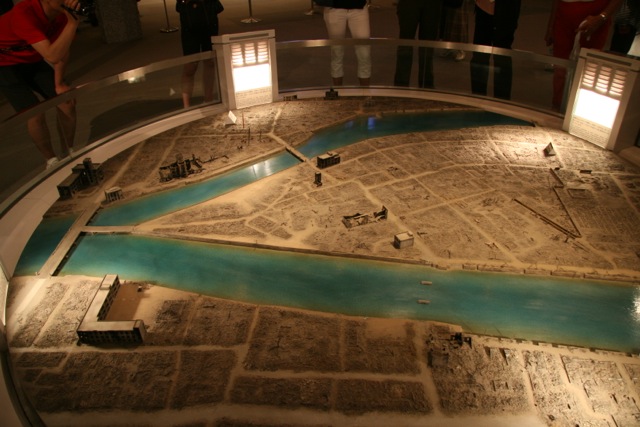
“After” model. The Peace Park is located on the island. The Hypocenter of the bombing is (out of frame) above red stake near the top center.
Some poignant artifacts displayed in the museum
Excerpt from a speech by Pope John Paul II given in Hiroshima, 1981
Various statues/memorials
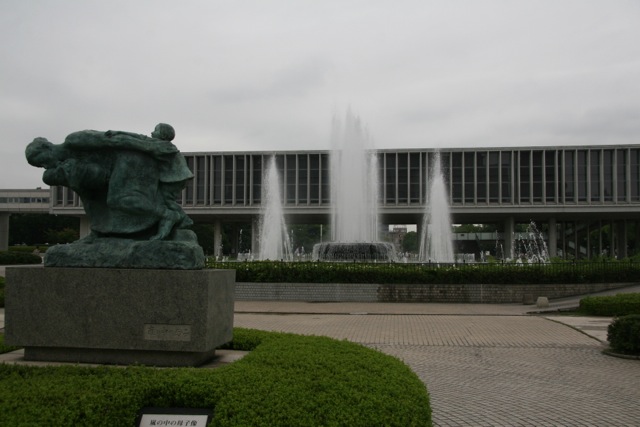
Statue of Mother and Child in the Storm, in front of the museum
Fountain of Prayer
Children’s Peace Monument-surrounded by paper cranes, inspired by the story of Sadako
A small portion of the many thousands of origami cranes donated to the site
Memorial mound, containing cremated remains of more than 70,000 unidentified dead
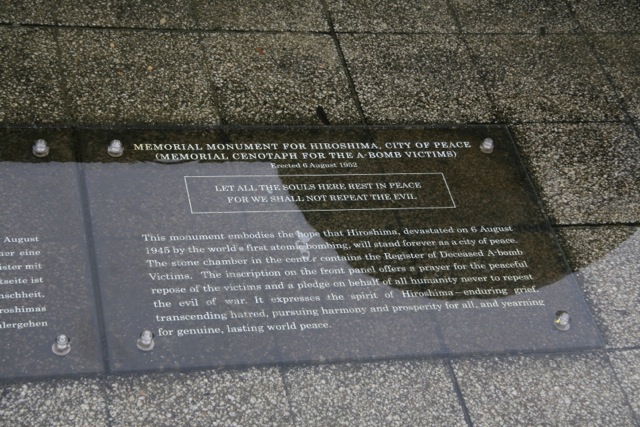
Memorial Cenotaph and description.
Cenotaph to those killed in the bombing
The cenotaph contains a listing of all those killed in the bombing, comprising more than 220,000 names. There is some dispute as to the proper translation. In the original Japanese, the translation omits the subject of the sentence, so it is uncertain whom (we/they) would not repeat the evil.
There are a few traditional Japanese bells, one of the more symbolic of them has a world map on it with no national boundaries. The striker its on an atomic symbol, so ringing the bell denotes “one world” at peace. The tolling of this bell is often the only sound heard in the park, as most visitors are silent in their contemplation of the surroundings.
Peace Bell
Clock tower that rings daily at 8:15
In late 1944, due to the labor shortage, the Japanese government required all students 12 years of age and older to work in munitions factories or elsewhere in support of the war effort. Of the approximately 8,400 upper level students in Hiroshima at the time, 6,300 were killed in the bombing.
Mobilized Students Memorial Tower
Final thoughts on Hiroshima
Visiting Hiroshima was an emotionally moving experience. It is likely not for everyone, but personally, I am so glad I made the trip. This was an unusual stop on my ‘fun’ trip, but it was well worthwhile, and I would strongly recommend a visit.
ANA currently flies multiple daily flights on their 787s from Haneda, and there are a few daily flights from Narita. Hiroshima is also a major stop on the JR West Shinkansen line, and is about 4 hours from Tokyo by train.
Special thanks to Seth for his travel tips and the inspiration for the journey to Hiroshima.

